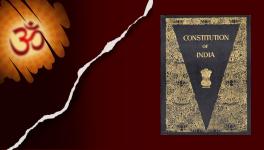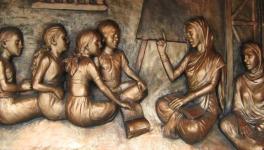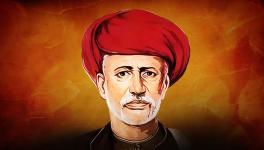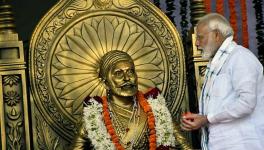The Changing Meanings Of Partition In Cinema
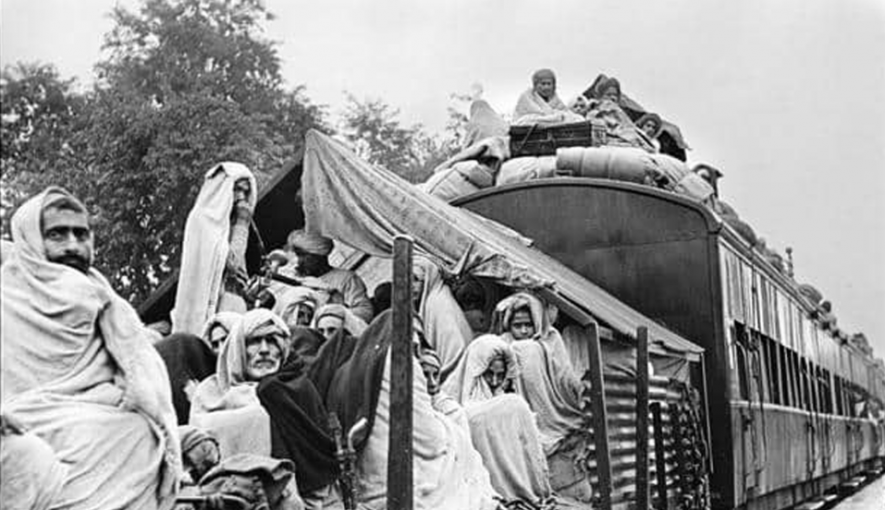
Cinema and historical trauma
The partition of India in 1947 was the most cataclysmic event in the modern history of South Asia. It is estimated that half a million people lost their lives in the ensuing riots and nearly fifteen million were forced to abandon their homes and become refugees. The aftermath of the partition of India perhaps occupies the same position in modern Indian history that the Holocaust occupies in the modern history of the West: as a traumatic moment that must be relived constantly in order that the lessons learnt from it are not forgotten. The affirmative responses to the TV mini-series Holocaust (1978) stressed the positive effect of the intense emotional responses generated by the text and argue that Holocaust was instrumental in generating debates about the Nazi past (1) and the same viewpoint is perhaps held with regard to Govind Nihalani’s TV mini-series Tamas (1986) which deals with Partition.
It has been suggested that the value of works like Holocaust lies in the paradigm of mourning, with its emphasis on the importance of replaying the past, of confronting loss and acknowledging guilt and responsibility. All this is rooted in a traditional notion of history associated with the elegiac tradition, enacting the mourning process and hence reaffirming beliefs about providence (2). While there is evidently emotional strength to be drawn from mourning, implied in its valorization is also an uncritical and ahistorical attachment to experience (3). It has been observed about holocaust films in general (and this is as true of most Indian films about Partition) that the emphasis on mourning betokens a fascination with death as ‘kitsch’(4); the mourning paradigm also leads to oversimplification, a denial of the dynamic nature of the past and the role the past plays in the present. With the passage of time, for instance, the Holocaust has come to seem the central event of World War II, with Hollywood (5) becoming the instrument facilitating its recovery. This suggests that the past serves other purposes and is not merely being mourned. To illustrate the political uses to which the Holocaust is put today, after Schindler’s List (1993) swept the Academy Awards the editorials and commentaries made implicit and explicit connections between the film and concerns about the state of Israel, about conflicts between Israelis and Arabs, and about anti-Semitic statements by members of the African-American community (6). Partition may therefore also have a covert political significance in Indian cinema that goes beyond grief at occurrences of the past.
Partition occupies the same position in the Indian consciousness that the Holocaust does in the consciousness of the West (7) but mainstream Indian cinema has not given it the position that Hollywood has accorded the Holocaust. Still, Indian mainstream cinema has a singular relationship with history and I need to examine it before I actually discuss the films about partition.
Indian history and mainstream cinema
As I have demonstrated elsewhere (8) Indian mainstream cinema does not acknowledge universal time. Not only is crosscutting not in evidence, chronology and duration not strictly denoted but narratives also find it difficult to locate the action within the continuum of history. Only a handful of historical epochs provide it with subjects – chiefly the Mughal Emperors Akbar, Jehangir and Shah Jehan but even these films are family dramas in costume and not historical inquiries. History creates few myths of its own and one is hard-pressed to find a film that uses even Independence for its narrative thrust, despite the efforts of the state to build a durable mythology out of the freedom struggle. Some cinema from the nineties onwards – 1942: A Love Story (1994) to Lagaan (2001) – appears to be departures but the films only use history as justification for patriotism; they do not pretend to ‘interpret’ history afresh even if for the contingencies of the present. This observation may also be made about Gadar: Ek Prem Katha (2001), an anti- Pakistani film with Partition as backdrop. Other attributes deriving from this cinema’s indifference to universal time is the closure through the family reunion (or the fruitful conclusion of a romance) and the impossibility of unknowns within the narrative, i.e.: no fate remaining unresolved. No character may walk away into the sunset secure in the knowledge of history continuing after the story.
A useful study of audience reactions to mainstream cinema (8) testing several independent hypotheses on its social role concluded that it was largely an instrument of ‘cultural continuity’. The films apparently stabilize the social system by representing new needs and mythologizing ‘tradition’. Since new social needs are historically created an ‘instrument of cultural continuity’ it can be argued, bridges the gap between traditional belief and the actual dispensation of history. What mainstream film narrative apparently does is problematize the experiences of history in a language acceptable to tradition and then provide ‘traditional’ solutions. The expectations of the immediate present are the key to what is problematized rather that a past occurrence (9). The events regarded as violently
cataclysmic do not produce a discernible impact upon mainstream cinema but the expectations deriving from them nonetheless do. The assassinations of Mahatma Gandhi (1948), Indira Gandhi (1984) and Rajiv Gandhi (1991) are not mentioned but the death of the Father of the Nation is followed by a proliferation of orphans in films like Anokhi Ada (1948). The anti-Sikh riots after Mrs Gandhi’s death and the consequent alienation of the Sikh community are not acknowledged but Subhash Ghai’s Karma (1985) introduces a gallant young Sikh who sacrifices his life for the nation at a critical moment. It can be argued that, generally speaking, mainstream cinema has been an instrument of reassurance, not simply representing or interpreting history but providing recompense – by sometimes anticipating it. This paper examines three films with only two of them being from the mainstream. The first anticipates Partition and while second responds to it as a contemporary event. The third film belongs to non-mainstream cinema and is the representative of a category of films about Partition that have received acclaim within India.
Anticipating Partition: Anmol Ghadi (1946)
After 1943, the Muslim question became gradually more important in India and expectations of Partition became unavoidable although until 1946 the Muslim League’s definition of ‘Partition’ was flexible and might have included autonomy within an Indian confederation. This led to Indian cinema explicitly affirming the Muslim ruler’s place in India’s tradition. The most important films to perform the function are Tansen (1943), Humayun (1945) and Shahjehan (1946). The above films are all nominally ‘historical’ but they are preoccupied with affirming the place of the Muslim in India rather than interpreting history.
Mehboob Khan’s Anmol Ghadi (1946) anticipates Partition in a more covert and allegorical way. The film is about the childhood attachment between two children – the poor Chander and the affluent Latha. Latha presents Chander with a watch just before her family migrates to Bombay and Chander is left alone. Chander (Surendra) grows up and, thanks to his toiling mother, he acquires an education but continues to long for Latha until he also migrates to Bombay. A rich friend named Prakash induces him to move to the city where he finds employment managing Prakash’s business in musical instruments. A client named Basanti falls in love with Chander and Basanti is Latha’s friend. Latha (Nurjehan) now writes best-selling novels under the pseudonym of Renu Devi and has herself still not gotten over Chander. Chander’s mother is old and fragile and she falls ill but Chander is too preoccupied with finding Latha to attend to his mother. Prakash draws Chander’s attention to the old woman’s condition but Chander is still too taken up with finding his lost love. Chander and Latha finally meet but, by this time, Latha is engaged to marry Prakash. Chander is in despair and returns to his mother but the old woman is now gravely ill. Latha wants to follow him but other loyalties assert themselves and she resigns herself to her destiny. Chander takes his mother away from Bombay, and mother and son return to their village where Chander’s mother goes to ‘join her husband in heaven’. Before she ‘goes away’ Chander’s mother reminds him of her earlier counsel – that the rich and the poor will always be removed from one another. Chander returns briefly to Bombay to attend Prakash’s wedding and he presents Latha with the one gift he can afford – the watch she gave him as a child.
Anmol Ghadi is, to my mind, without parallel in Indian popular cinema in as much as it shows the male protagonist more attentive to the heroine than he is to his sacrificing mother. Chander’s mother labors for her son’s education but her toiling is shown in an unusual way – she mills wheat into flour so that he may not go hungry. There is also some dialogue in which the mother emphasizes the value of wheat, the way in which it becomes atta and then roti and is therefore crucial to a person’s sustenance. ‘Bread-provider’ is often a way in which the land is depicted to make it appear sacred. The motif of the mother-as-bread-provider can hence be read in a useful way and this is that Anmol Ghadi is equating the relationship between Chander and his mother as the one between a person and his land. The question to be posed is why Chander loses his mother and the answer is that this is because he follows ‘rich people’ whose loyalties are to their own class.
The political factor of pertinence here is that the Muslim community in India had a very small middle-class and apart from medical doctors, lawyers or clergy, everyone of ability apparently gravitated to high posts in the government or the army (10). This meant there was a large class gap between the leaders of the Muslim League and their followers. Jinnah was himself elegant and Westernized (11) and far from the devout Muslim that the future leader of a theocratic Islamic state could be, while the bulk of his following was different.
Anmol Ghadi appeared in 1946 when the Muslim League pressed for a second nation and Anmol Ghadi apparently addresses ‘poor people’ who would do better being loyal to ‘their land’ than follow the ‘rich’, who have only their own interests at heart. Interestingly, Chander’s song when his mother departs does not invoke a corporeal mother but simply enquires about ‘true kinship’. It may be asked why Chander is not made a Muslim in the film and one explanation is that the director (Mehboob Khan) and the story- writer (Anwar Batalvi) were Muslims and that they represent the protagonists simply as ‘people’ and not as ‘Muslims’. It should also be noted that only in the genre of the ‘Muslim social’ (e.g.: Mere Mehboob, 1963) is a Muslim merely a ‘person’ and a Hindu, a ‘Hindu’.
It is also significant that the ‘rich’ in Anmol Ghadi are not presented as self- seeking but sympathetically, as good people with loyalties only natural to them. My interpretation accounts for many things but it still leaves questions unanswered, and one of them is why Prakash is shown to be more attentive to Chander’s mother than Chander himself is. The only solution to the puzzle is perhaps that Prakash’s behavior helps to give emphasis to Chander’s own conduct – and suggests that there is no inherent hostility between the rich and the poor. The rich may not be bad people but it will still be suicidal for the poor to forsake the land and follow them.
Partition in the time of Partition: Lahore (1949)
ML Anand’s Lahore appeared shortly after Partition and, given the likely time lag between the conceiving of a film and its completion, it may be taken to respond to historical trauma as though it were immediate.
The story of Lahore, which begins with a nostalgic voiceover, is told in flashback and images of the streets of Lahore in ‘the old days’ fill the screen. As the story unfolds, we discover that Chaman and Leela live in adjoining houses, that they are to be married and that Chaman has an older brother, a wastrel, who spends his days playing with the children of the street or in a local restaurant. Chaman’s father dies early in the film after confessing in court to some illicit activity and Chaman leaves for Bombay to study and also to work and support his family. The first part of the film is set immediately before 1947 but there is no episode in this part that may be said to containing a foreboding of Partition or its violence. If a comparison is to be made with a non-mainstream rendering of the same events Deepa Mehta’s Earth (1999) has a whole first part setting the mood for the violent climax. We have full knowledge of the film’s intentions and also come to understand that it is examining the relationships between its characters only in the context of what history is about to do to them. We sit waiting through the film’s early parts (taken up with evoking the period) although no noteworthy event is scheduled to happen until history actually intervenes. Since the narrative of the film has its focus upon the historical moment of Partition all personal anecdotes in it are, ultimately, details that add up to nothing more substantial than the recreation of a mood. It is only the events of Partition that make a ‘narrative’ out of the assortment of incidents in the lives of the characters of the film.
The first part of Lahore, in contrast, is almost crowded with personal events and anecdotes that are inherently of interest. So many important things (important to the narrative) happen that we tend to forget the times in which story is set and the violence of 1947, when it comes, comes unexpectedly and abruptly. After dutifully sending money to his mother in Lahore every month, and having his money orders stolen by his older brother, Chaman returns home for a holiday during which he resumes his romance with Leela. It is during this ‘holiday’ that the family is confronted by the reality of Partition, its violence coming without warning. None of the violence is actually seen in the film – we hear it briefly on the soundtrack, we see documentary footage pertaining to its aftermath and a voiceover says “Charon tharaf andhera hi andhera tha!” (“There was darkness all around!”). Soon after this Chaman and his mother find their way to refugee camps in India leaving the older son behind. Leela’s whereabouts are not ascertainable although she is known to be in Lahore. The second part of Anand’s film is taken up with how Leela is retrieved from Pakistan after she is forced to become the ‘wife’ of a Muslim in Lahore. Chaman also helps repatriate a Muslim girl Salma, who is in a similar predicament in India, to Lahore. The hero’s older brother in Lahore is now also a model of responsibility and the film ends happily with the family being reunited in India.
Lahore keeps the riots and the trauma of Partition resolutely off-screen with the two parts of the narrative being arranged as separate tableaux, as distinct narratives belonging to different epochs, but carried over from the first part to the second is Chaman’s enduring love for Leela. Partition does not stand out as a distinct occurrence among the episodes but takes the shape of an ‘interval’ separating a ‘before’ from an ‘after’ and this is reminiscent of the dissolve or the freeze that demarcates the prologue from the rest of a narrative in mainstream films like Deewar (1975). The two parts of Lahore stand clearly apart but they are not self-contained. Whatever is left incomplete in the first part is duly completed in the second. Earth concludes with the heroine’s disappearance but Lahore cannot obviously end with Leela remaining lost; film convention dictates the impossibility of ‘unknowns’ in the narrative as well as the need for an appropriate closure.
As is customary in Indian mainstream cinema Lahore compulsively closes its universe but the film must nevertheless contend with the moment of Partition representing a fragment of the authentic not explainable in the terms specified by its own melodramatic narrative logic and artifice. Lahore therefore declines to deal with the moment at the level of episode but turns it into an unprecedented ‘interval’ lying outside the purview of the narrative and which can be likened to a deliberate tear in its fabric. If interpreted as an admission that such an incomprehensibly horrific experience lies outside the capability of its own expressive powers and understanding, this aspect of Lahore may be regarded as a singularity in cinema. “A murderer’s bloody fingerprint on a page says more than the words printed on it,” proposes Walter Benjamin (12) and the ‘gash’ or ‘tear’ in the narrative of Lahore is perhaps like a bloody fingerprint left by Partition on Indian cinema.
Partition in later day cinema: Pinjar (2003)
A characteristic of mainstream cinema is that it gives no indication that its myths are drawn from history. As Roland Barthes phrases it, myth is a kind of language and a set of conventions by which the exigencies of a historical moment are sought to be given eternal justification (13). Due to its curious relationship with universal time and history, mainstream cinema does just the opposite. It responds to historical situations through familiar/timeless mythology. Anmol Ghadi, for instance, responds to the impending threat of partition by allegorizing it as a poor man forsaking his mother to follow a rich young woman. If Lahore appears different, history in the film makes a brutal intrusion into a still timeless tale. In contrast to these films Chandraprakash Dwivedi’s Pinjar is actually about Partition and therefore needs closer examination. I would like to argue that it is not a mainstream film and belongs to a category that arose out of an entirely different, state driven impetus.
While there the categories of Hindi language cinema outside the mainstream go back much earlier – Bimal Roy and V Shantaram’s films, KA Abbas’ Dharti Ke Lal (1946) are apparent examples – there is a hypothesis that the development of India’s ‘art’ and ‘middle’ cinemas was largely facilitated by state interventionism and Mrs Gandhi’s radical initiatives around 1969-70 and this eventually led to the segmentation of film audiences (14)</sup. The Film Finance Corporation (FFC) which had functioned like any government institution entered into competition with the mainstream industry. FFC policy was designed to promote a ‘national cinema’ through an emphasis on authenticity. Among the successful films financed and promoted by FFC were Basu Chatterjee’s Sara Akash (1969) and Mrinal Sen’s Bhuvan Shome (1969). While the movement lost steam around 1977 when Mrs Gandhi was removed from power, it can be argued that the virtues of non-mainstream cinema were still promoted in the state-owned television channel Doordarshan till well into the 1980s. Serials like Hum Log (1984), Nukkad (1986) and Tamas (1986) may be said, in a sense, to have subscribed to the aesthetic promoted by FFC policy. While the state no longer intervenes in the film industry, the idea of a National Cinema has not been extinguished. The ‘Indian Panorama’ at the International Film Festival of India still showcases non-mainstream films and selection here guarantees telecasting on the state owned Doordarshan as well as exposure to the rest of the world.
Chandraprakash Dwivedi acquired prominence through his serial Chanakya (1990) on Doordarshan and Pinjar may be regarded as brining the same perspective to Partition as the television serial Govind Nihalani’s Tamas, which is – and perhaps will remain – the definitive exploration of the subject in the medium of television.
Pinjar was nearly as expensive a film as the mainstream Gadar: Ek Prem Katha but the net domestic collections of latter film were more than 16 times those of Pinjar (15), this providing evidence that Pinjar targets a minority audience in the manner of art or middle cinema. The film begins with a brief prologue, a Sikh religious procession being attacked by an armed Muslim mob and the ensuing carnage, with a voiceover informing us of the times. It then shifts to the household of Mohanlal, his wife, two daughters Puro and Lajjo, and a son Trilok. The family is in Amritsar but they make for their estate in the west where the plan is to establish ties with Shyamlal’s family by solemnizing marital ties between Puro and Shyamlal’s son Ramchand. Ties are soon contracted between Puro and Ramchand and also between Ramchand’s sister Rajjo and Trilok but, as fortune will have it, Puro is abducted by a Muslim named Rashid due to an old animosity. Although Puro escapes, her family will not have her back. She marries Rashid and is given the name Hamida after being forced into Islam. Rashid regrets his act and does everything possible to atone. He moves away from his family and lives a peaceful life with Puro in a milieu swiftly becoming polarized. But Rashid is not safe because Trilok searches him out and sets fire to his crops. Riots soon commence and the Hindu families try to flee but Rajjo is also abducted. Hamida/Puro and Rashid nonetheless seek her out and have her returned to her family. The film concludes with the Hindus returning to India but Hamida/Puro choosing to remain with Rashid in Pakistan although Ramchand offers to marry her and take her back to India.
Pinjar begins with a Muslim attack upon a Sikh procession but it still tries to divide its sympathies evenly. Hamida/Paro, for instance, adopts the child of a dead beggar woman but, after she has made the child her own, local Hindus take the child away because the beggar was a Hindu. Trilok’s destruction of Rashid’s crops is also the act of a vengeful person. On the other hand, the way the film treats family relationships points to another discourse. While the two Hindu families are always overflowing with cheerful women and children, Rashid’s family is singularly without a feminine presence or the conspicuous presence of a child. Rashid has no mother and the only woman is a distant aunt who becomes friendly with Puro. More importantly, Puro becomes pregnant by Rashid but the child is stillborn. When Ramchand, Trilok and Rajjo take leave of Puro and Rajjo at the Pakistani border outpost, we sense an overwhelming sterility confronting Puro and Rashid in their future life. While the others seem to be brought together happily, there does not seem to be anything Puro and Rashid may look forward to. Since they remain in Pakistan and the others return to India, there is apparently a covert signification here of Pakistan as an infertile space. Another item of significance is the absence of the mother in Rashid’s family while both the Hindu families have mothers. The mother is the site of virtue in mainstream cinema (16) and there is the celebrated sequence in the mainstream film Deewar (1975) in which the mother’s association is with the virtuous son although it is her other son who is wealthy. This signifier apparently has deep cultural roots because it is sometimes employed in art cinema as well and in MS Sathyu’s Garam Hawa (1973) about the travails of an Indian Muslim family during Partition time, Salim Mirza’s brothers leave for Pakistan one by one though Salim Mirza chooses to remain behind in India. His mother, importantly, also remains with him. In the context of Pinjar, we could say that the absence of the mother in Rashid’s family can be interpreted as Pakistan being the less virtuous space.
Conclusion
Partition does not carry the same meaning for Pakistan that it does for India. There has apparently been only one film about partition coming from Pakistan (17) called Kartar Singh (1959). The film is about a Sikh miscreant at the time of Partition who has a change of heart but is killed tragically when he is escorting a Muslim victim of violence across the border. According to a Pakistani critic, the film helps to reveal that Hindus and Muslims could have attained freedom without tearing each other apart if the political leadership of the three sides – the British, the Congress and the Muslim League – had a better perception of the basic reality as it existed for most people in the sub-continent (18). What this suggests is that Partition was inevitable to Pakistan but the bloodshed might have been avoided.
While for Pakistan, Partition violence signifies the birth pangs of a newly emerging nation, to India, Partition has tended to mean ‘man’s inhumanity to man’ and this is the refrain not only of Pinjar but of Tamas and Pamela Rooks’ Train to Pakistan (1998) as well. Deepa Mehta’s Earth (1998) is different because it is based on a Pakistani novel by Bapsi Sidhwa and deals with Partition violence being used to settle scores. It is significant that the vision of ‘man’s inhumanity to man’ has largely ignored violence in Bengal which was nearly as great as the violence in Punjab though it was more sporadic (19) . One reason for the Bengal experience being sidelined is perhaps that its meaning is more complex – there was a clearer association between religion and class and land went to the poor Muslims in the east (20) when the Hindu landowners were dispossessed. Radical historians in India have attempted to look at partition through private memories and through personal narratives (21). Both the received Indian and Pakistani historical interpretations attempt to give meaning to the events of 1947 by molding them into a key moment in the realization of the destiny of the respective nation-states. Oral histories and memoirs produced by those who lived through 1947 articulate a starkly different and competing vision of the period. It has been noted that survivors of Partition rarely separate the politics and violence of 1947 and for survivors ‘Partition is the violence’ (22).
While all of this is undoubtedly true, the experience of Pinjar shows us how an emphasis on the brutality and the violence can be used to privilege the Indian nation over the Pakistani one. India came out in 1947 as a secular nation which means that – at least in theory – India is on the side of religious tolerance. Pakistan, on the other hand, is a theocratic state. Since ‘India’ is an ancient term and ‘Pakistan’ is a recent one, it is also difficult for Pakistan to dispute the notion that it was ‘carved out of India’ though both nation- states came into existence together. It is perhaps these advantages that the Indian state covertly exploits when it promotes texts mourning the violence of partition through awards and acclaim. As long as this advantage remains, there will continue to be films made and novels written about Partition as another instance of ‘man’s inhumanity to man’.
- Marcia Landy, Cinematic Uses of the Past, Minneapolis: University of Minneapolis Press, 1997, p 229-230.
- Ibid, p230.
- Ibid, p 230.
- Saul Friedlander, Reflections of Nazism: An Essay on Kitsch and Death, New York: Harper and Row, 1982, pp26-30.
- Thomas Doherty, The Americanization of the Holocaust, Cineaste, 20, No.3 (1994), p51.
- Marcia Landy, Cinematic Uses of the Past, p256.
- Ashis Nandy, An Ambiguous Journey to the City, New Delhi: Oxford University Press, 2001, pp128-9
- MK Raghavendra, Seduced by the Familiar: Narration and Meaning in Indian Popular Cinema, Delhi: Oxford University New Press, 2008, pp31-41.
- Ibid, pp237-238.
- Percival Spear, A History of India, Vol.2. Harmondsworth, Penguin, 1970, pp223
- Ibid, p228.
- Walter Benjamin, The Author as Producer, from Understanding Brecht, trans. Anna Bostock, London: Verso 1983, p94. In writing about the incorporation of real objects into a painting by the proponents of Dadaism, Benjamin has this to say: “…the smallest authentic fragment of everyday life says more than a painting. Just as a murderer’s bloody fingerprint on a page says more than the words printed on it.”
- Roland Barthes, Myth Today, from Mythologies, London: Paladin, 1973, p143.
- See M Madhava Prasad, Ideology of the Hindi Film, New Delhi: Oxford University Press, 1998, pp 115-123 for a useful summary.
- Ref: http://www.ibosnetwork.com. In terms of costs, Pinjar cost Rs 13 crores (http://us.rediff.com/cms/print.jsp?docpath=//movies/2003/oct/22chandra.htm) while Gadar: Ek Prem Katha had a budget of Rs 18 crores.
- For instance see Ravi Vasudevan, Shifting Codes, Dissolving Identities: The Hindi Popular Film of the 1950s as Popular Culture, from Ravi Vasudevan (ed.) Making Meaning in Indian Cinema, New Delhi: Oxford University Press, 2008, p 110
- See http://www.realbollywood.com/news/2006/11/filmmakers-refused-to-portray- partition.html, which reports on a talk by film scholar Ira Bhaskar.
- Mushtaq Gazdar, Pakistani Cinema 1947-1997, Karachi: Oxford University Press, 1997, p81.
- Meghna Guhathakurta, Families, Displacement from Ghislaine Glasson Deschaumes, Rada Ivekovic (eds). Divided Countries, Separated Cities: The Modern Legacy of Partition, New Delhi; Oxford University Press, 2003, pp 96- 105.
- See Meenakshi Shedde, ‘In East Pakistan, Partition was seen as a good thing’ DNA, 7th July, 2006. Shedde talks to film scholar Moinak Biswas who says, “But in East Pakistan, many of the Hindus were landowners. And according to scholars like Partho Chatterjee, with Partition, there was expropriation of land by the tillers, leading to an agrarian revolution. The Bangladeshi poet Al Mahmood even says, ‘Partition was a good thing.’ It is mainly the Hindus who were traumatized and so don’t want to talk about it. But for a generation of poor Muslim tillers, it was an escape from a life spent behind the plough.”
- For instance, Gyanendra Pandey, Remembering Partition: Violence, Nationalism and History in India, Cambridge: Cambridge University Press, 2001.
- Ibid, p 189.
Get the latest reports & analysis with people's perspective on Protests, movements & deep analytical videos, discussions of the current affairs in your Telegram app. Subscribe to NewsClick's Telegram channel & get Real-Time updates on stories, as they get published on our website.









